Devin Devine, human being who does stuff outside
Canvas tarps, for landscaping and contracting purposes
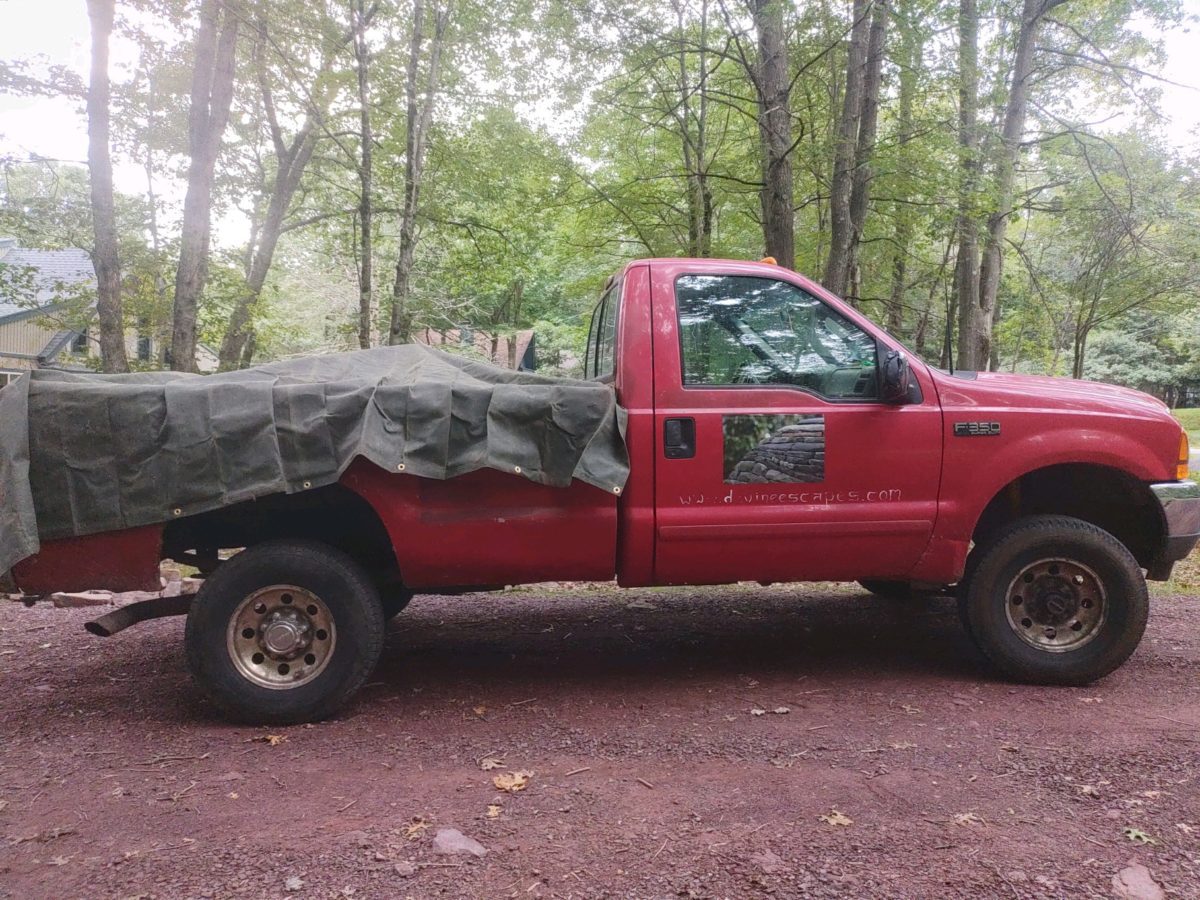
For landscapers and contractors, sure. How many tarps does the average contractor go through a year? How many little blue threads of tarp plastic do I find, pretty much every day, while working outside? Well, I’m sorry to say it, but I’ve been a part of this scourge, and for too long. I’ve owned dozens of these things, over 15 years contracting.
These plastic tarps are so useful, and cheap. Of course they are lightweight, flimsy, and they don’t last.
A canvas tarp meanwhile costs something like 5 times as much. Gasp! But is expected to last (more than) 10 times* longer. Oh, and it’s not shedding little bits of plastic, little toxic fibers to end up in bird’s nests. It doesn’t dissolve in the sun, unleashing micro-plastics into our already stressed eco-systems.
*UPDATE the canvas tarp works great, after 5 months of continuous contractor use. Will update this post again. next year!
Another benefit of canvas tarps is that they are heavier.
Heavier is good. I drape my canvas tarp over the truck to protect the tools inside from a rain storm–with no need to weigh down the tarp with stones and with no worry of a 20 mile an hour wind blowing it away.
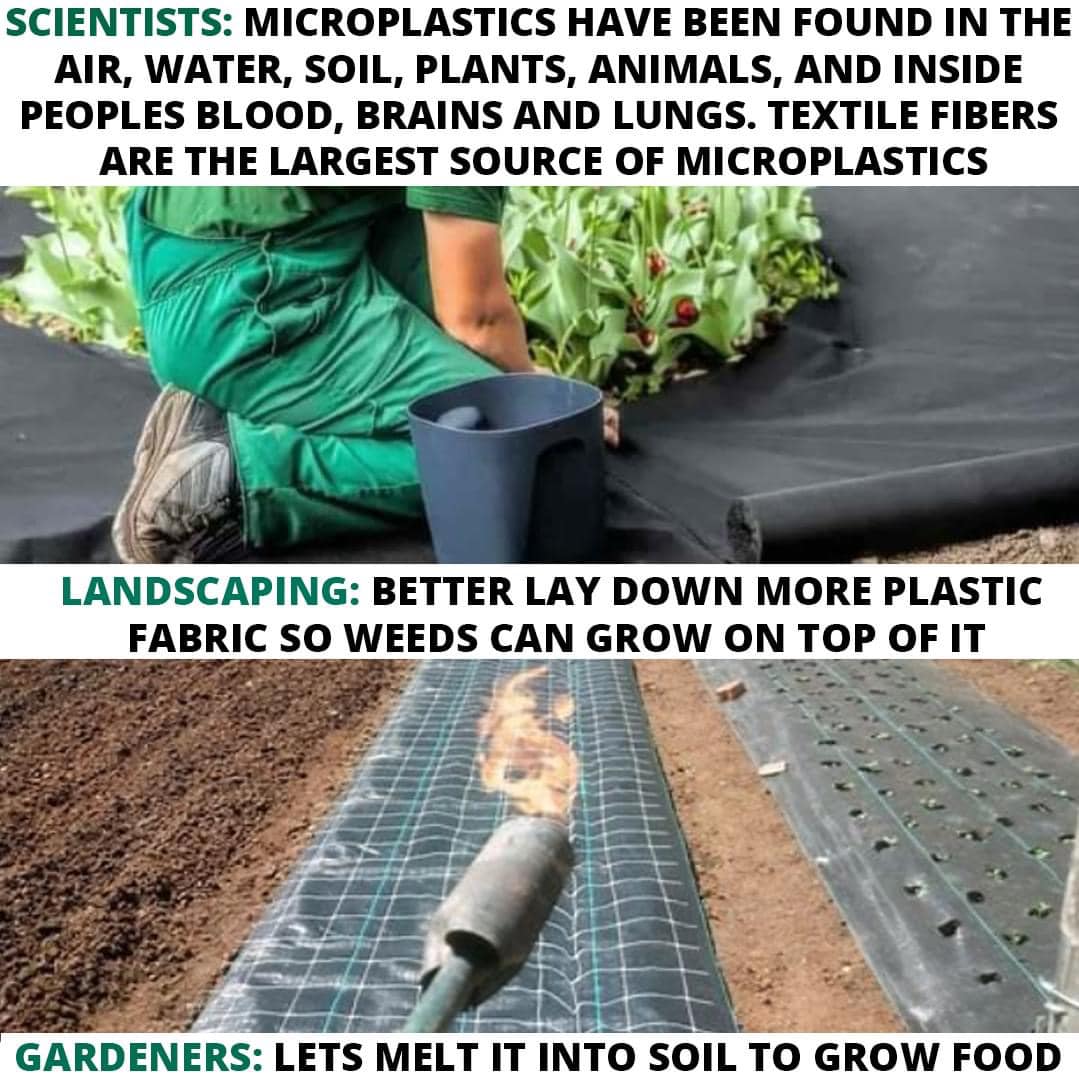
- You don’t need landscape fabric. Weeds will grow anyway. Instead, you’ll want to mulch thickly (with real mulch or wood chips, never anything dyed), or plant a native ground cover or clover–depending. More on that, down below.
- You don’t need polymeric sand in between your pavers–it will crack up and ends up costing more in maintenance than natural options.
- Don’t need to seal exterior flagstone–ever.
- Neither do you need any plastic edging restraint–it looks sloppy and does not function as well as natural options.
- We have an alternative to plastic tarps.
- And a non toxic marking paint.
- We don’t need those ubiquitous 5 gallon plastic buckets, either.
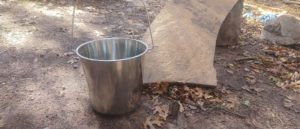
There are cheaply available galvanized steel buckets, too. I’ve had a few–problem with them is that they tend to rust. Just like with chain link fences–sure, there’s a galvanization, a zink coating, that’s supposed to protect from rust, but it doesn’t last forever. I’m going with stainless steel, for now. Will purchase 10 of these, and update the post in a year to let you know how it’s working out for me. I’m tired of plastic bucket handles falling off…..the bottoms getting cracked…sure, they’re cheap enough to replace, but must we live a life of constantly changing out our cheap, toxic buckets, for new toxic cheapos? Nah, we don’t need to live like that.
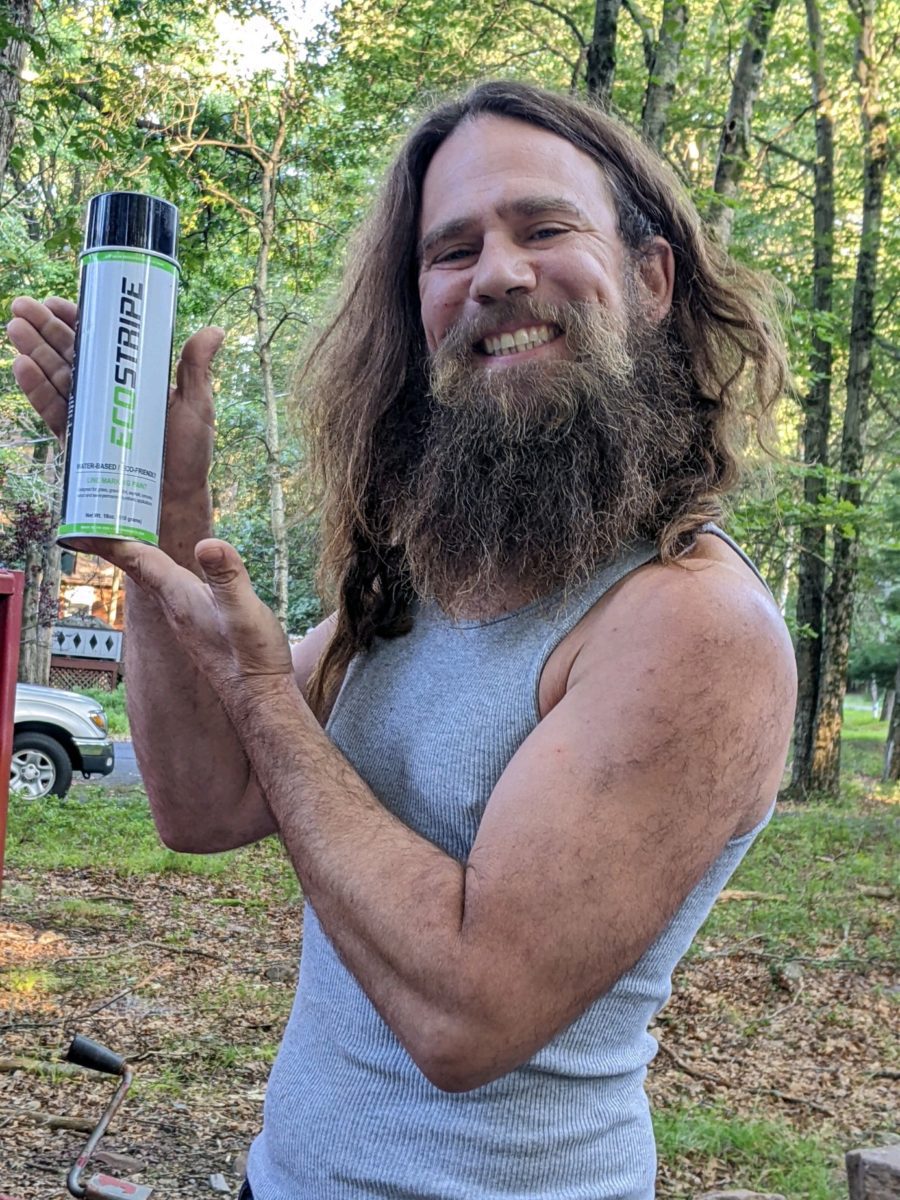
Eco stripe non toxic marking paint.

Yes, any sealant means “plastic” and indeed it often doesn’t end well.
UPDATE July 2023: YES! the stainless steel buckets are MUCH better than plastic
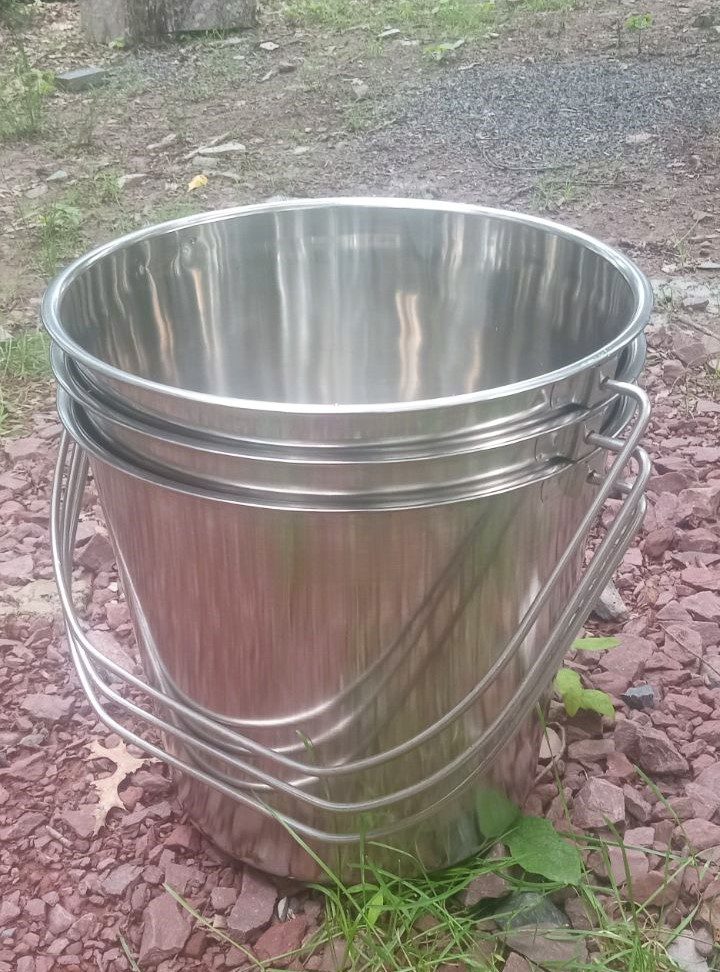
You can stack these buckets in to each other–and they won’t get stuck together. Handles don’t break off. Life is better this way.
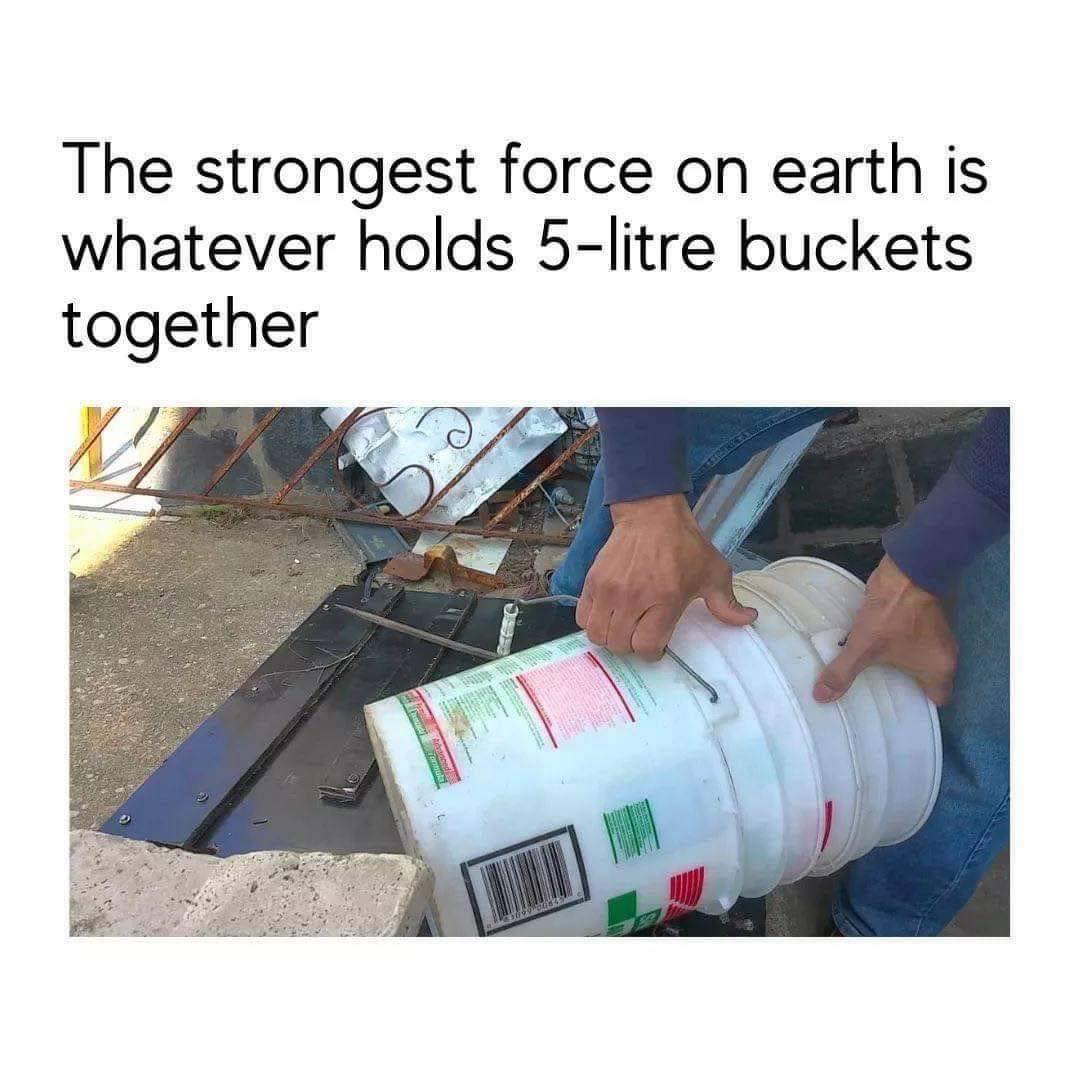
Related content: should you seal your exterior stone?
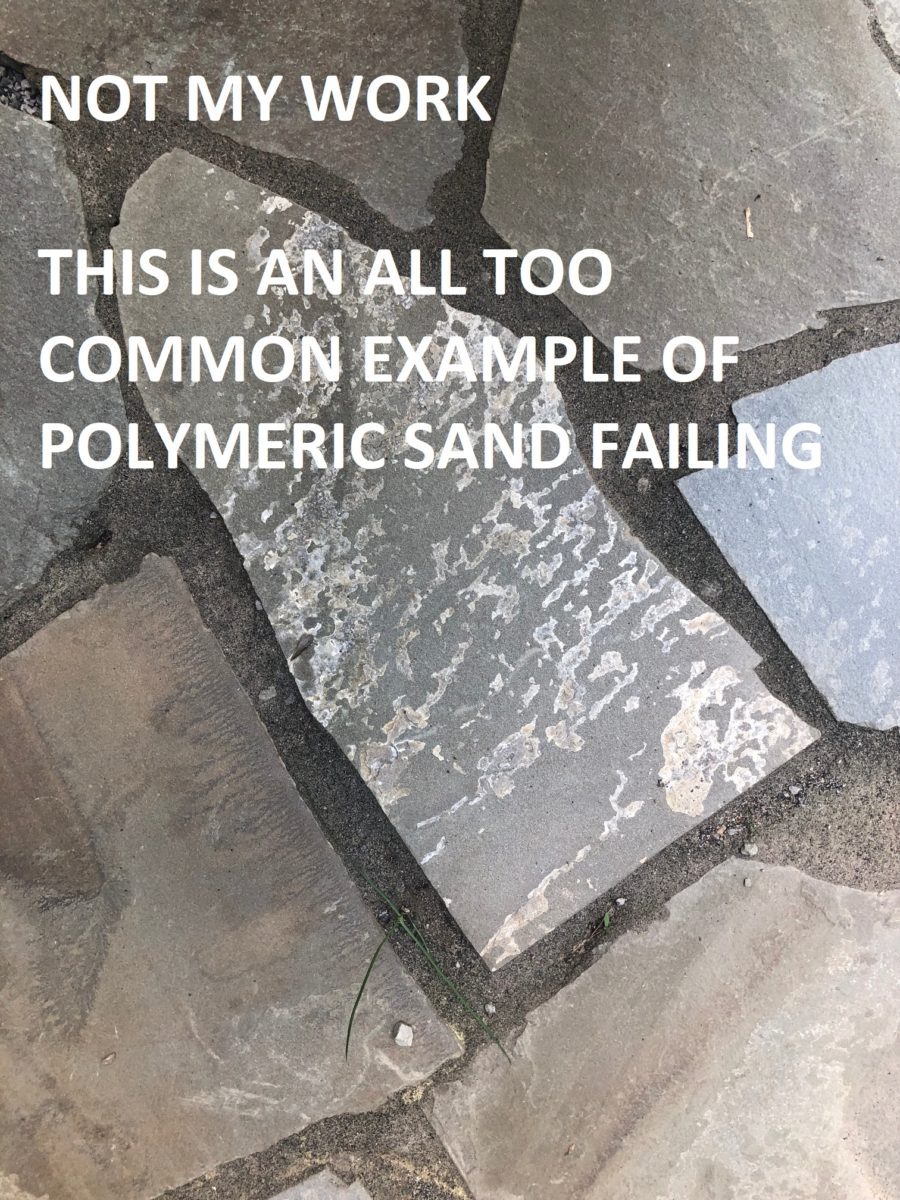
related content: say NO to polymeric sand
The problem with polymeric sand…..it’s sand, mixed with a plastic binder.
Just add water and it hardens up and stays put! Until it begins cracking….this patio was built just a couple months ago! The joints are of course way too large and too irregular….
And THIS is why polymeric sand became popular–it hardens up. SO that means you can get away with huge sloppy joints, right? Nope! Here, the joints are already cracking up and unwanted plant material is growing there. Had they used a stone dust joint, then they could pull, or torch the “weed”…or they could use my method–pour boiling water.
But now they have this cracked up plastic joint, and the entire project is going to need to be re-done…let’s move on then, and look at more pleasant examples.
Related content: how to level flagstones in stone dust and use stone dust as a joint material
Natural landscaping done by my students
The examples above are professional installations (Or “allegedly professional” at least). Unlucky homeowners paid thousands of dollars for this. The examples below however were built by lucky homeowners who found their way to Devine Escapes Dot Com. They paid around 120 doll hairs for instructions, and built superior patios on their own.
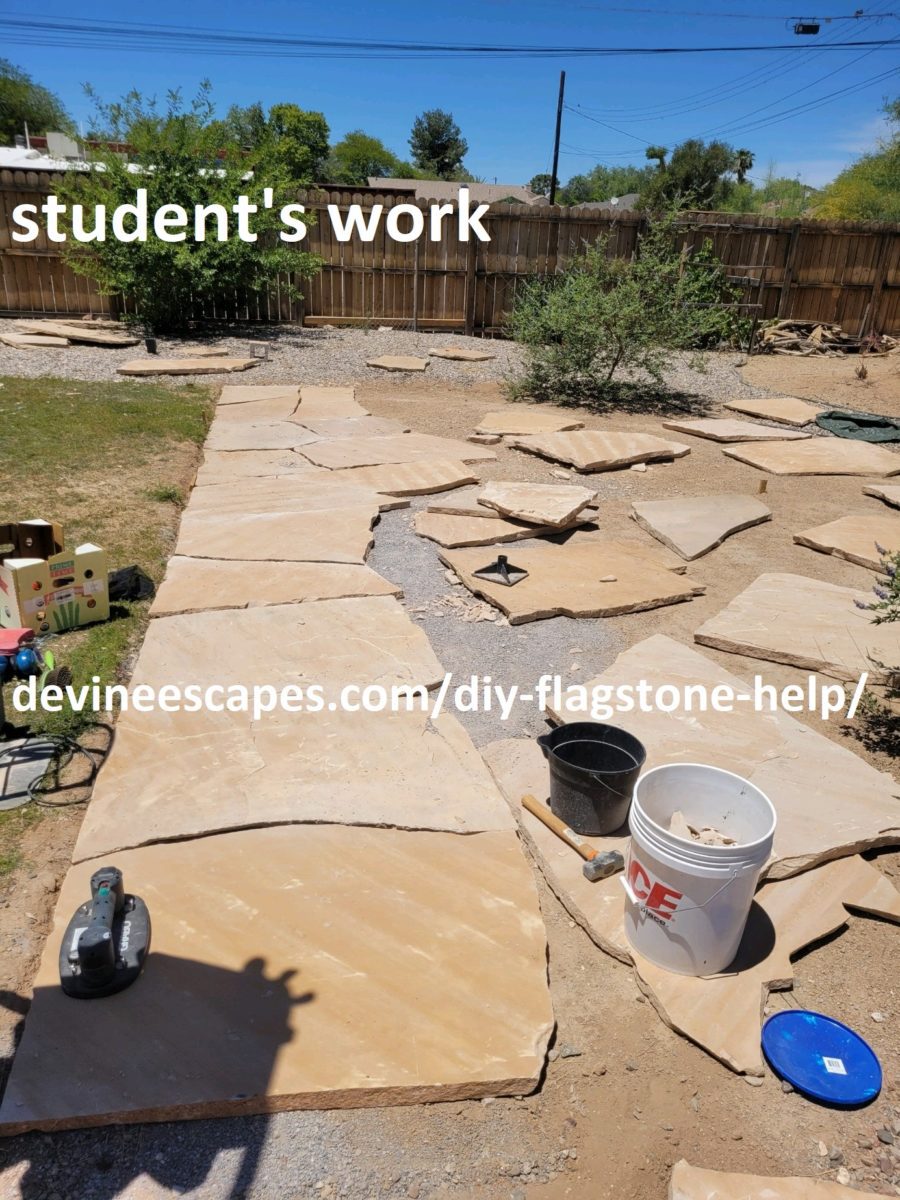
Look at those tight joints with no visible saw-cuts! Also, observe that along the edge only large stones are used–no unsightly plastic edge restraint needed. This homeowner is doing a good job of following my guidelines. AND, they took my advice and purchased a grabo, too. I look forward to seeing this one completed 🙂
Related content: Devin’s natural stone landscaping academy (and DIY consultations).
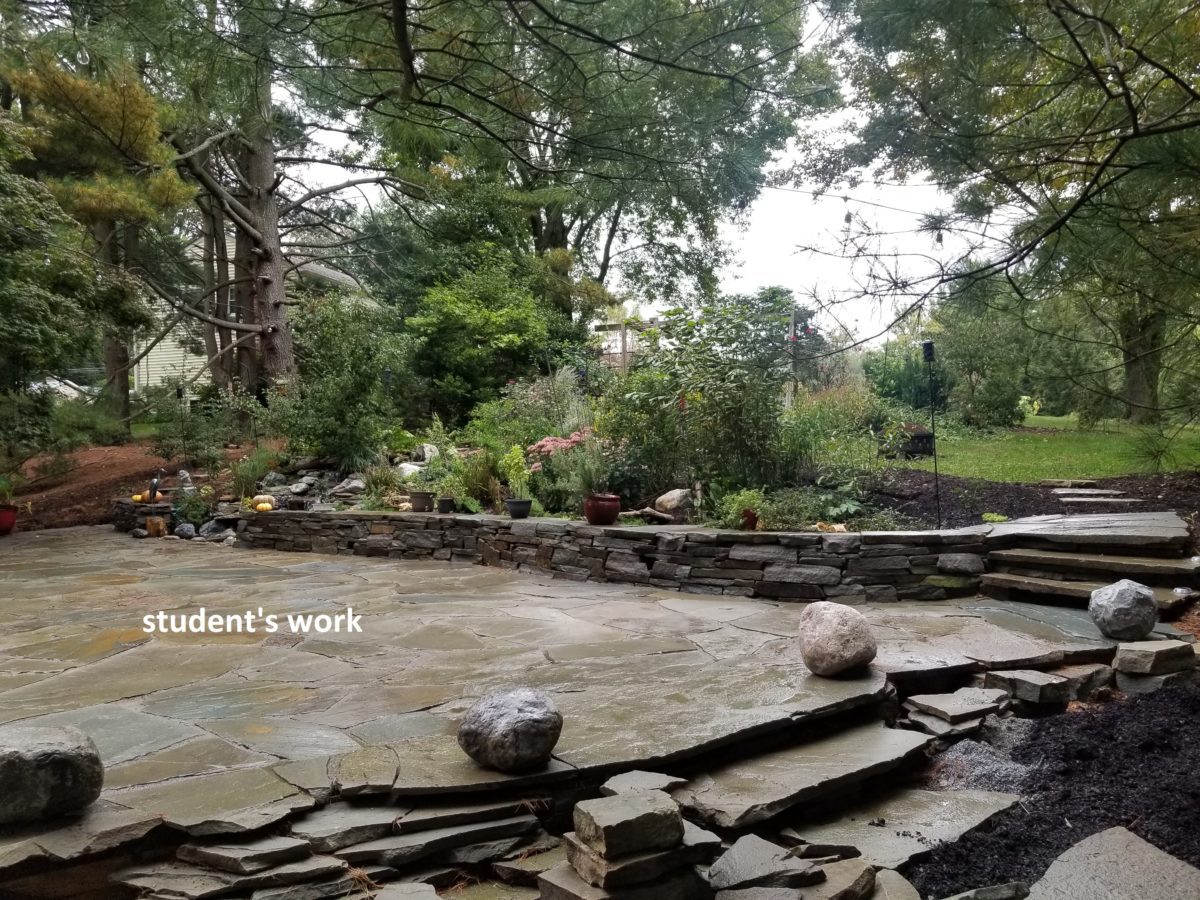
I’ve got hundreds of photos like this–all natural stone landscaping, done by my students–looking better than most of the professional installations that I see.
Related content: plastic edging for flagstone?
But if we can’t use fabric, then what do we do about weeds?
This will depend on the circumstances we’re talking about.
- Weeds in the lawn: leave them! They are probably useful plants that you just don’t know about and maybe you can consider dedicating part of that lawn as meadow? Provide some habitat, sequester some carbon.
- Weeds in the garden: Mulch thickly. With real much, nothing dyed. Can be wood chips, last year’s leaves, bark much etc. Or plant native ground cover. In some cases, such as when establishing a new garden, I’ll use cardboard or contractor paper underneath the mulch.
- For weeds in the patio/walkway, I recommend fitting your flagstones tight and using boiling water to remove any unwanted plants in between your flagstones (so-called “weeds”. Usually that word just means a plant that you haven’t befriended yet! Alternatively you can plant ground cover or moss between them stones.
None of these three scenarios require landscape fabric.
*Permaculture is the design science in which we maximize efficiency and reap abundance by designing our systems to mimic natural systems
If you find this content helpful you can help support this website by commenting below, by sharing on social media, by DONATING if you want to help out that way, and by subscribing to this blog.
thank you

Hi Devin,
I really enjoy your content and vast expertise!
As a mason, I have struggled for years with this concept. It is truly an ethical dilemma!
My question is, what are your thoughts on plastic drain pipes? Are they included in the mantra “no plastic in the landscape?” Or are they the exception?
Many thanks!!
Jacob,
I sure try to avoid needing any sort of drain pipe.If a drain is needed….often it seems like a mistake. Oops, we didn’t plan well or didn’t grade well, and now there’s a drain. So we grade well and plan well and usually avoid any pipes. Downspouts are an issue though, for tying into rain gutters. Back in the day they used ceramic…. now, it’s pvc and yup, that stuff leaches voc’s.
Another big one is tarps. Everyone uses plastic and replaces them often. Water proof canvas tarps are more expensive, but if they last longer, maybe they’re more affordable in the long run. I just bought a 12′ x 10′ for $100… hopefully it works well and I can ditch the common plastic tarps for good! Will update this post, after seeing how it works long term.